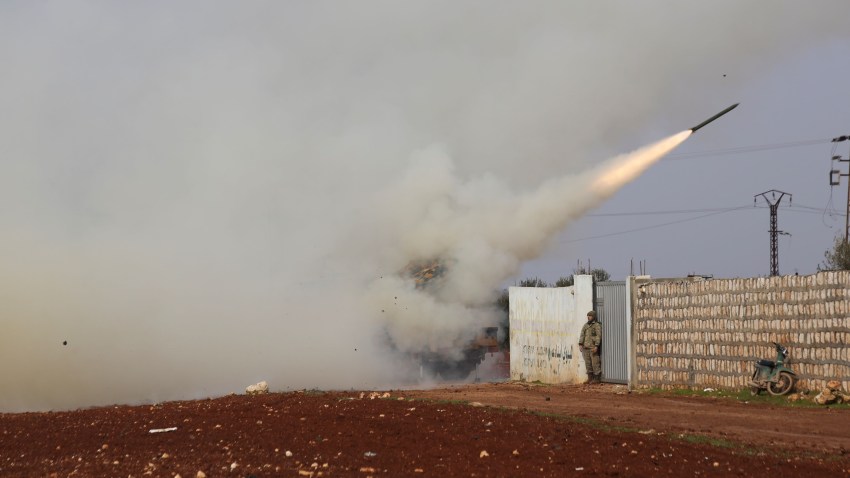The de facto partition of Syria into three distinct political spaces generated a complacent conviction among policymakers in Europe and the U.S. that the Syrian conflict had been largely settled. Yet even as global attention moved on, skirmishing along lines of contact between rebel groups under Turkish protection and the forces of the Assad regime continues. In central Syria, Islamic State attacks against Syrian forces as well as SDF-controlled towns undermine efforts at economic reconstruction. Shelling between SDF and Turkish-backed groups as well as infighting among rebel factions causes misery for thousands of civilians. Even in districts fully taken back by Syrian forces in the southern province of Daraa, banditry and shootouts involving former rebels supposedly reconciled with the regime indicate how tenuous Assad’s grip might be over large swathes of territory. With this constant tension in the background, the three zones of Syria each contain their own internal sources of instability and external vulnerabilities that could spark another round of brutal escalation spilling over beyond Syria’s borders. Though still protected by a U.S. troop presence as well as some Russian military units placed near the towns of Tel Rifaat and Manbij, the SDF looks exposed to another Turkish attempt to seize territory. Moreover, hostility in Ankara toward the SDF’s ties to the YPG and supporters of the PKK’s brand of Kurdish irredentism reaches beyond Erdogan’s ruling AKP. So although the Turkish opposition claims it would prefer to withdraw from Syria, Assad’s unreliability coupled with YPG pressure along Turkey’s borders and the risks of further migration flows make it more likely that any Turkish government would feel obliged to respond to a threat to the status quo there with further military incursions. The SDF’s vulnerabilities are compounded by the frustration expressed by substantial parts of the Syrian Arab population as well as rival Kurdish groups in its territory with how governance of northeast Syria is dominated by PKK-aligned networks. This anger makes those who feel cut out from the SDF’s political order potential targets for Islamic State subversion, Turkish deal-making or Assad regime bribery that can fuel further conflict in territory in which U.S. troops are deployed. Provinces under Turkish protection are also exhibiting serious social stresses. The global surge in commodity and energy prices led to spikes in electricity and gas prices, triggering widespread rioting against local governments in Afrin. The collapse in the value of the Turkish lira, the primary currency in areas controlled by Ankara, has accentuated price spirals of imported goods, further stoking discontent and making it even more difficult for Turkey to rule via local proxies. With education, health care, utilities and transport in these Turkish-controlled Syrian territories all integrated with Turkish state structures across the border, Ankara—whether under Erdogan’s ruling AKP party or a successor—faces the choice of either handing Afrin back to an Assad regime that cannot be trusted to keep the YPG out or doubling down on their de facto absorption into Turkey. Turkey’s struggle to develop effective governance in Idlib is also opening up further space for the HTS to pursue its broader ambitions in northern Syria. Turmoil in the global economy is also putting the Assad regime under strain. Unable to control the rampant corruption that, through its distribution of patronage, is crucial to his grip on power, Assad’s regime remains dependent on Iranian and Russian military resources to sustain its position. More recently, signs of investment by the United Arab Emirates indicate another source of funding needed to stave off economic collapse might become available. Yet rising commodity prices of such household staples as bread and cooking gas have led to open frustration among the regime’s core Alawite supporters. The disastrous implosion of Lebanon’s financial sector has also damaged the financial position of influential regime loyalists who move capital and smuggle goods through Beirut. With regular raids by Islamic State terror cells into regime-held areas, a scenario in which domestic turmoil or imperial overstretch by Iran or Russia constrains their ability to shore up the Assad regime could swiftly tip the power balance in Syria. That in turn could reopen questions about the country’s future that Western policymakers thought had been resolved in 2017. Precedents abound of civil wars that many assumed had died down, only to suddenly escalate again after an external shock or internal challenge throws a fragile political equilibrium out of whack. In October 1976, the massive Syrian intervention in Lebanon’s civil war by Bashar’s father, Hafez, was considered by many at the time to be the closing act of that conflict. Yet rivalries among militias along with intransigence by the Palestinian Liberation Organization triggered a much greater escalation, which culminated in an Israeli invasion in 1982 and cycles of fighting that continued until collective exhaustion led to a peace deal in 1990. If one takes in all the potential sources of disaster in Syria that have become endemic in each of its three zones, the tendency among many European and American policymakers to assume that Syria’s civil war is over looks downright delusional. Unfortunately, if the global response to past civil wars—from Lebanon to Bosnia to the Democratic Republic of Congo—is anything to go by, those who should have known better will express surprise when Syria spirals out of control again.The three zones in which Syria has been de facto partitioned each contain their own internal and external sources of instability that could spark another round of brutal escalation spilling over beyond Syria’s borders.
Alexander Clarkson is a lecturer in European studies at King’s College London. His research explores the impact that transnational diaspora communities have had on the politics of Germany and Europe after 1945 as well as how the militarization of the European Union’s border system has affected its relationships with neighboring states. His weekly WPR column appears every Wednesday.

